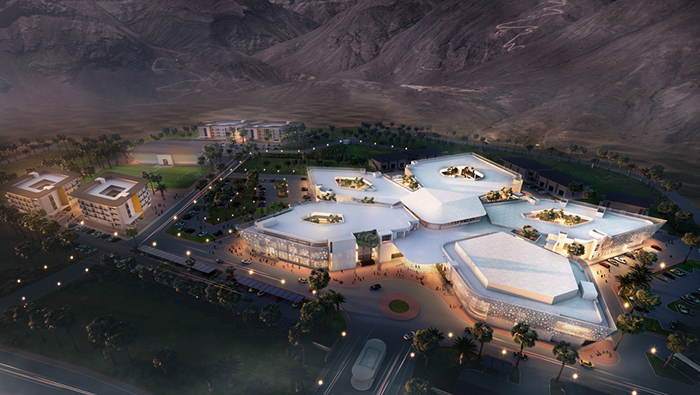
Khasab: The establishment of the University of Technology and Applied Sciences (UTAS) in Musandam Governorate is a strategic project with economic, scientific, tourism, and social dimensions. It forms part of the comprehensive development and urban strategy to advance the governorate, aligning with the "Oman Vision 2040".
The project is expected to contribute to balanced development across Oman’s governorates, attract investment in projects and services, and enhance the governorate’s economic system, including marine eco-tourism, the fisheries sector, logistics transport services, and renewable energy investments.
Dr. Said Hamad Al Rubaee, Vice Chancellor of the University of Technology and Applied Sciences, emphasised that the Musandam branch will strengthen human development factors, increase job opportunities for the local community, and supply the labour market with graduates who meet the requirements of the comprehensive development plan. This will be achieved through high-quality educational and training programmes that reinforce national identity and social values while equipping graduates with modern knowledge and skills for life and work.
In a statement to Oman News Agency (ONA), he said that the establishment of the University of Technology and Applied Sciences branch in Musandam Governorate marks the first higher education institution in the governorate, aimed at developing Omani human resources and serving as a key driver of social and economic progress.
The current admission plan anticipates around 750 students across various specialisations upon the graduation of the first cohort with bachelor’s degrees. The number of enrolled and admitted students is expected to grow annually after the completion of the branch’s permanent building.
He noted that in the 2024/2025 academic year, the university’s total student number reached 46,875, including 22,503 male students (48%) and 24,372 female students (52%), in addition to 147 postgraduate students. During the same academic year, the Musandam branch enrolled 328 students.
The university offers diverse specialisations across its six colleges: Creative Industries, Education, Applied Sciences and Pharmacy, Economics and Administrative Sciences, Computing and Information Sciences, and Engineering and Technology. These programs are available at diploma, advanced diploma, and bachelor’s levels.
At the Musandam branch during the 2024/2025 academic year, several unique and in-demand programmes were introduced, aligned with the Fourth Industrial Revolution, including cloud computing, financial technology, digital business and analytics, and education.
The university also plans to introduce scientific specialisations in the second phase, covering marine navigation, marine systems design, and marine product processing technology. These programmes are expected to attract students from across Oman and beyond.
He explained that, till the completion of the permanent branch building, a temporary facility has been leased to accommodate students and staff. The interim building includes classrooms, academic and administrative offices, computer and science labs, a library, meeting halls, and other service facilities.
As for the final designs for the main branch buildings in Khasab, he affirmed that pre-qualification for the project has been completed, and bids from companies are currently being analysed by the university’s consultancy office and specialists. The permanent building will be designed in the shape of Oman’s five-petaled desert rose, featuring administrative and academic buildings, engineering workshops, a theater, a library, restaurants, student and staff housing complexes, and green spaces.
Dr. Said added that future plans for the Musandam branch include establishing a marine sciences department in a prime location in Bukha. The design will resemble the "sextant," a navigation tool historically used by Omani sailors, and will feature a control tower for boat competitions, a racing circuit, workshops, offices, labs, and classrooms—all meeting global standards for higher education institutions.